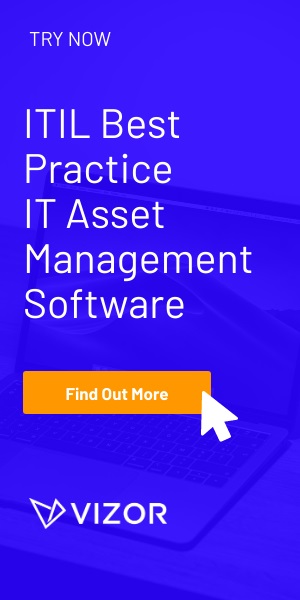Subscription Models for an integrated ITAM/ITSM suite
Responding to market interest in subscription models for ITAM/ITSM tools.
Recent discussions with service provider partners has stimulated a fresh look at the ways in which the tools necessary for supporting ITAM and ITSM activities can be charged out on a pay-per-use basis. I’m happy to share these notes with you and welcome any comments back, including directly to me at cbartram@vector-networks.com
We listed the main areas of functionality for which a pay-per-use regime was requested. For each, we first set down a simple definition of how the tools created value for the user organization. The point of doing that was that it gave us something to measure a potential charging regime against. For each area of ITAM/ITSM functionality we were then able to put forward one or more charging regimes.
Here’s what we came up with.
IT Asset Inventory and Software Utilization
Value is created through providing a foundation database of assets and usage.
Charge per PC or Server type asset for the maximum number of assets in the database, assessed by taking a daily count at randomised time of day. This is easy to implement and well aligned with the value proposition.
Include network assets; likely to need different charge rates for PC/Server assets and other network device assets. Also easy to implement; provides a broader basis of valuation, reflecting network discovery and mapping functionality.
Software Distribution
Value is created through the automation of the distribution process.
Charge per completed distribution to a system (‘distribution instance’). Possibly with volume breaks. For example, $1 per distribution instance for 1 – 1000. $0.80 for 1000 – 5000. Etc. This regime is tightly aligned to the value proposition but could be subject to considerable variability depending on software distribution activities. In a new situation it can be hard to predict the charges as levels of software distribution activity are hard to forecast without prior experience of using the tools.
Charge per PC or Server type asset in the AM Pro database. This regime does not reflect variations in usage but is highly predictable.
HelpDesk
Value is created by enabling issues to be managed from creation through to closure.
Charge per Issue managed. Could be per issue opened, per issue closed, or per issue opened, edited or closed. Any of these regimes is relatively easy to implement but creates incentive for inappropriate nesting of issues inside other issues.
Charge per strength of the Help Desk team. Example: Count of individual named users with accounts present on the system any time in the month. Example: Active (i.e. not disabled) Logons. This regime is predictable, and a reasonable connection to activity levels if the team size is varied to reflect demand for the service.
Charge per overall usage. Example: Maximum concurrent use in the month. Example: Total issue open time. Either regime should provide a reasonable indicator of service activity and is likely to become predictable over a period of some months.
Note that a shorter inactivity timeout will help combat ‘wasted’ sessions and wasted issue open time.
Change Management
Value is created by facilitating collaboration between multiple stakeholders to manage change of any type.
Charge per PC and Server type asset in the Asset Manager Pro database (see above). This regime reflects the proposition that the level of change activity is generally going to be linked to the size of the supported environment. It has the advantage of predictability.
Charge per number of change management participants. Example: Count of individual named users with accounts present on the system any time in the month. This could provide a reasonable reflection of extent of usage, but is not as predictable as the per PC/Server approach.
Licence Management
Value is created by facilitating pro-active management of software assets deployed on the managed systems.
Charge per PC and Server type asset in the Asset Manager Pro database (see above). Unless the organization is not typical in its software purchasing, this should provide a good linkage to the overall scope of savings to be made from proactive licence management.
Charge per overall usage. Example: Total logon time. This could provide a reasonable reflection of extent of usage but is not as predictable as the per Client approach.
PC-Duo Remote Control
Value is created by enabling one or more Masters to connect for periods of time to Hosts. Two types of usage are commonly seen: remote server support, user support.
Charge per total session time in the previous month. Possibly with volume breaks that would correspond to decreasing per-Host capital cost. The regime provides a reasonable overall reflection of usage; it is likely to be predictable.
Charge per number of Hosts connected to in the month. This may be simple to implement, but it is not clear that the regime would reflect the amount and value of the usage, particularly for mission critical support for remote servers.
Charge per maximum requirement for concurrent Master sessions. This is close to equivalent to the permanent licence model for the v12 PC-Duo Web architecture. It is likely to be fairly steady from one month to the next, given the size of the support team, and is not directly correlated to the number of supported Hosts.






